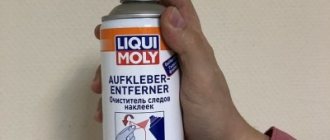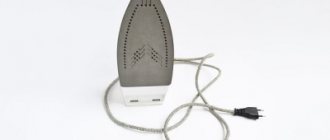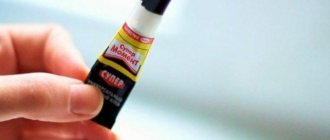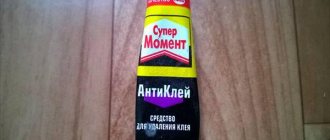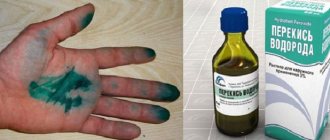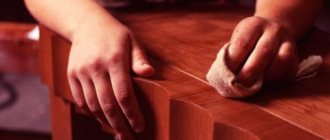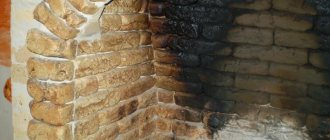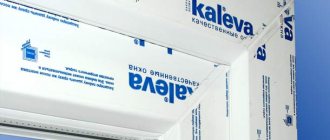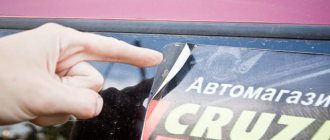If in a store the sticker on a product is important (it contains all the information necessary for the buyer), then at home various stickers, glued price tags and labels create a problem.
At the site of the torn sticker, there is often a sticky mark to which dirt and dust sticks.
How to remove sticker adhesive from dishes, cars, mirrors, books and other objects? There are a sufficient number of ways to remove traces of glue from a sticker quickly and efficiently.
Is it possible to remove the adhesive from a sticker?
For marking, a weak adhesive composition is used, which can be removed with improvised means. If you remove a sticker, immediately clean the surface of the adhesive, otherwise dust and dirt will stick to it.
But if you can’t remove the entire label, use these recommendations:
- Do not scrub the glue with cold water, otherwise it will harden.
- Use lint-free or cotton rags rather than cotton pads.
- Test the product on a small area so as not to damage the surface.
- Remove the sticker from clothing and textiles slowly to avoid damaging them.
Remove stickers immediately before the glue sets into the surface.
Lemon or lemon juice to remove tape marks and price tags
Everyone knows that lemon is sour. The citric acid contained in it is an excellent solvent and degreases surfaces. Freshly squeezed lemon juice can be used to remove glue from furniture; it will not harm polishing or varnish if you do not leave it for a long time. It is also suitable for cleaning clothes from sticky traces; after soaking a section of fabric in lemon juice, the item should be immediately washed or rinsed in plenty of water. Suitable for cleaning almost all surfaces: plastic, metal, glass, ceramic. If you don’t have fresh fruit on hand, you can use a paste of citric acid powder and warm water.
Now you know everything about removing sticky residue. Stickers with barcodes will not overshadow the joy of buying and using a new item.
Types of stickers
Stickers come in paper and polymer types; they need to be removed in different ways.
Paper based
To remove the paper sticker, simply moisten it with warm water. After 3–5 minutes, wipe the soaked base with a sponge and remove any remaining glue using washing powder.
To remove a laminated sticker, remove the film, then wet the label with water.
Polymer based
A polymer sticker is more elastic than paper and melts at high temperatures. To remove the sticker, you need to peel off the transparent film and remove traces of glue using dishwashing detergent. If the label is difficult to remove, heat it with a hot hairdryer.
Helpful information
Tips to help deal with glue stains without harming the product:
- Metal should not be cleaned with other metal products with sharp edges, such as a knife or spatula. This will cause scratches.
- If the metal is covered with paint that is damaged, the use of solvents should be abandoned. They will make the situation worse.
- After treating the surface with any substances, it must be wiped with a cloth soaked in clean water. Solvent should not be left on metal.
- The composition must be applied precisely, trying not to get on a surface free of glue.
Methods for removing glue from a sticker
Try simple methods first. If glue remains, use chemicals or special products.
Hairdryer
Using a hairdryer you can remove even old glue stains. Set the temperature to maximum, heat the surface and carefully remove the adhesive with a plastic spatula, an old credit card or the back of a knife. If small particles of glue remain, treat the area with soapy water or vegetable oil.
Do not use a hair dryer on painted or plastic surfaces: high temperatures may cause the paint to swell and the plastic to deform.
Alcohol or acetone
The method is suitable for glass, metal surfaces and tiles. Dampen a rag with alcohol or acetone, apply it to the stain and after five minutes remove traces of glue with a soft sponge. To get rid of a specific odor, wash the dishes with soap or a special product.
Distilled vinegar
Soak a rag in white vinegar and apply it to the glue stain. After 10 minutes, remove the soaked glue residue with a plastic card and wipe the surface with a soft, damp cloth, and then with a dry one. It is better not to use this method on plastic.
Masking tape
You can remove fresh glue from the label using a paint tool.
tape or tape - this method will not harm the surface. Stick it on the stain and tear it off sharply. Repeat the procedure several times.
Sunflower oil
Any oil will do: the fat will dissolve the adhesive. Apply the liquid to the surface or cover the glue marks with an oil-soaked cloth and wait a few minutes. Then peel off the paper and remove the softened particles with a damp cloth.
Eraser
The eraser is great for removing fresh sticker marks from hard surfaces. Dampen the stain, wipe with a dry cloth and honeycomb
Rub away the glue with an eraser. If it doesn't work the first time, repeat the procedure.
Wet wipes
Wipes soaked in alcohol will do. If the stain is dry, first moisten it with water and then wipe it dry. Using a napkin, remove any remaining adhesive from the surface and rinse the surface.
Petrol
This method is good at removing glue stains on glass and metal. It is better to use purified household gasoline rather than automobile gasoline. Moisten a napkin with liquid and wet the stain. Wait until the glue softens and wipe off the dirty area.
Lemon acid
To prepare the solution, mix two tablespoons of powder and 100 ml of warm water. Dampen a soft cloth in this solution, blot the dirt and leave for 15 minutes. Then wipe the surface with a clean damp cloth.
Special cleaning products
If household methods do not help or you don’t want to waste time preparing solutions, try professional remedies. They are universal, you can choose the right one for any surface.
Three effective remedies:
- Liqui Moly Cleaner. This is a car body cleaning spray that can be used at home: it quickly removes stickers from any surface. Spray the product onto the stain and leave for five minutes. Then wipe with a damp sponge and dry cloth.
- Universal aerosol "Antiscotch". Suitable for paints, glass, stone and metal. To remove dirt, spray the product onto the stain, leave it for 3-5 minutes and clean off any remaining adhesive with a sponge or napkin.
- Prosept Cleaner. Will clean any surfaces resistant to organic materials from traces of stickers and tape in 2-3 minutes. Treat the stain with the concentrate, leave for a few minutes and wipe with a damp cloth. Please note: has a slight whitening effect.
Professional products
Modern preparations sold in retail outlets will help you get rid of traces of glue quickly and without consequences. The most popular of them:
- Scotch Remover. Removing traces of tape and labels is the main purpose of this product. It contains active citrus oils, which help dissolve stains from stickers, tar, resin and self-adhesive films.
- Liqui Moly. A universal sticker cleaner will help you completely remove marks from glass, metal and resistant plastic. Consists of natural ingredients.
- ASTROhim. The product contains a complex of special additives that penetrates deep into the dirt, after which it softens and partially breaks down. Quickly removes stubborn adhesive stains and traces of bitumen, while being safe for the surface being treated.
- Profoam 2000. Broad-spectrum cleaner. Suitable for processing any coating, odorless, removes traces of glue, labels, markers, oil and many other contaminants.
- Fine Glass. The main purpose is glass cleaning. In addition, the mixture completely washes away adhesive traces on dishes, ceramic surfaces, metal and most types of plastic.
How to properly remove sticker adhesive from different surfaces
When choosing an adhesive remover, consider the type of material.
Automobile
To avoid scratching the paint, do not use scrapers, aggressive chemicals or abrasives. A special car wash product or soap solution will help get rid of glue stains: apply the product to a soft sponge and carefully wipe the sticker mark. Refined gasoline effectively fights glue: soak a microfiber cloth in it and treat the stain.
Dishes
The easiest way to remove traces of glue from new dishes is to treat them with lemon. Rub the stain with a lemon wedge and then with a damp sponge. To remove old stains, use
for nail polish remover. Soak a rag in the solution, wipe off the sticker, and then rinse the dishes under hot water and dishwashing detergent.
Banks
To remove label marks from a glass jar, fill it with hot water and let sit for 30 minutes. When the glue softens, wipe it with a soft sponge. To prevent jars from bursting, avoid sudden temperature changes.
Another way to get rid of glue: mix baking soda with water at room temperature in a 1:2 ratio. Soak a sponge in the solution and remove the dirt.
Fridge
Apply vegetable oil to the stain, leave for 20 minutes and wipe with a damp cloth. You can use kerosene, acetone or alcohol: soak a rag in the liquid and treat the surface.
Old stains can be removed with a hair dryer. Warm them up with hot air and gently scrape them with a plastic card.
Laptop
Dampen a microfiber cloth with water and wipe the surface of the laptop: the trace of glue will become wet and can be easily removed. If the glue mark is old, then use ethyl alcohol (70%): dampen a rag, apply to the stain and leave for 10 minutes. Then wipe with a damp cloth.
Mirrors
How to remove glue from a label on a mirror without scratching it? Tea tree or eucalyptus oil will do. Soak a soft cloth in the oil, wipe the stain and leave for 3-5 minutes. Then wipe well with a damp cloth, and then with a dry one.
You can also remove traces of glue using table vinegar. Dampen a rag with vinegar essence and wipe the stain. Clean the softened glue with a rag or the hard side of a sponge and wipe dry.
Plastic
Soak a cotton pad in vodka, rubbing alcohol, or cologne and wipe the stain. A soap solution will also help to gently soften the glue layer without damaging the plastic: pour liquid soap onto a damp sponge and treat the stain.
Book
You can easily remove sticker marks on a book using tape. If you need a more serious solution, try using a solvent: white spirit or nail polish remover without acetone - this method is suitable for glossy covers.
Metal
You can remove the label using vegetable oil, gasoline or soap solution. Choose a product, dampen a rag and wipe the stain. If the stain has dried, you can soften it with a hairdryer and scrape off the stain with a sponge.
Cloth
To remove the marking stain, simply wash the item in the washing machine. If there are traces left after washing, then
You can use nail polish remover without acetone. Soak the sticker in the mixture and carefully remove it. To avoid spoiling the item, test the effect of the liquid on an inconspicuous area of clothing. A soap solution, alcohol or table vinegar works well to remove traces of glue on clothes.
Furniture
To remove stickers from polished furniture, use vegetable oil. Apply oil to the sticker, leave for 10 minutes and remove it using a plastic card or knife. Wipe off any residue with a dry cloth.
To remove stickers from painted or unfinished wood furniture, use alcohol, benzine, acetone and other solvents. Saturate the sticker with one of the liquids, leave for 2-3 minutes and then remove it with a spatula or the back of a knife. Wood tolerates treatment with aggressive agents well, but some products, such as oil, can leave marks on the untreated surface.
You can remove stickers from plastic furniture using a hair dryer. Do not use alcohol or aggressive chemicals: they will damage the top layer of plastic.
Chipboard furniture can be easily cleaned with nail polish remover: soak a rag in it and wipe off the glue mark.
Recommendations
General rules and tips for removing stains from stickers will help you carry out the work efficiently and quickly:
When cleaning the surface of household appliances, it is necessary to follow safety rules for working with electrical equipment. So, you can only apply any products to a switched off device.- When using acetone, solvents and other chemical solutions with a very pungent odor for cleaning, it is necessary to ensure a flow of fresh air in the room (for example, open a window).
It is also necessary to ensure that flammable materials are not located near open flame sources. - When using a hairdryer to remove stickers, it is important to adjust the heating temperature. Excessively hot air not only deforms the already cleaned surface, but can also cause hand burns.
- Before applying a previously unused cleaning agent to a sticker adhesive stain, it must be tested on an inconspicuous area of the product.
Regardless of what product was used to remove sticker marks, do not neglect hand protection (gloves).
What not to do
When cleaning various surfaces from glue, you must not:
- use abrasives and hard brushes to clean the glass surface, heat the remaining glue with a hairdryer - hot air may cause dark spots to appear on the mirror;
- remove dirt using metal objects - they scratch the surface;
- use a melamine sponge to clean dishes - melamine contains toxic substances.
Do not use aggressive chemicals or strong solvents to avoid damaging the surface and harming your health. It is better to use safer methods.
Essential oils
Sometimes essential oils help get rid of glue stains. But they are not suitable for all types of plastic. Before removing stains with essential oil, check its compatibility with the selected surface by dropping a small amount of the substance in an inconspicuous place.
If a stain appears that cannot be wiped off, you should choose a different cleaning method. If there are no traces, cleaning using the chosen method is quite possible. The surface should be cleaned in the same way as when cleaning with vegetable oil.
